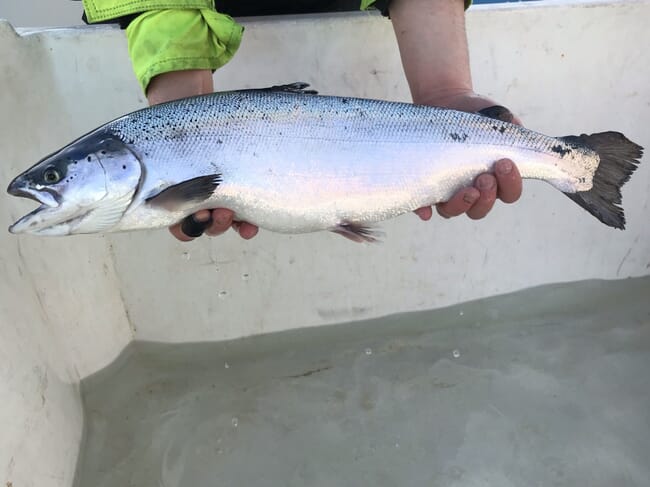
ASC argues that the revised threshold makes sense in the Scottish context
Compassion in World Farming International (CIWFI) reached out to ASC last week alleging that the revised sea lice indicators equates to a “fivefold increase” in the permissible number of lice per farmed fish; therefore arguing that the Code of Good Practice currently used as a mechanism for assessing ASC farms in Scotland is inappropriate.
However the ASC issued the following response to The Fish Site this week, which explains their decision in more detail:
“The previous ASC Salmon Standard (v1.3) had emphasised the metric limit set a decade ago as the core driver of impact at farm level. However, and in doing so, various equally important measures were either omitted or worked counter-effectively. This revised (v1.4) Standard has addressed this concern on Criterion 3.1.7, based on recommendations of the expert Technical Group (TG).
“Since a strong rationale for using the previous metric level could not be found in the scientific literature, an independent evaluation confirmed the approach to using sea lice limits that reflect the lowest current action/trigger limits used by the different regions as starting place for ASC’s regionally relevant sea lice limits and sensitive periods.
“In more details:
- ASC uses the lowest sea lice limit established in the different regions today (established either by the regulators or through an industry code of practice, whichever is lower) as the ASC Sea Lice Thresholds.
- ASC uses the sensitive period established in the different regions today (established either by the regulators or through an industry code of practice, whichever is longer).
- Since the Scottish regulatory threshold is 2 adult female at all times (reporting limit to FHI*) and 6 adult female at all times (FHI intervention limit) and there is not a set sensitive period, the threshold (0.5 adult female) and sensitive period used by the Code of Good Practice for Scottish Finfish Aquaculture (CoGP) were applied to Scotland in line with the rationale above.
“Since regional limits were set to reflect different environmental and biological conditions (eg salmonid and sea lice species, sea lice presence and host profiles, water temperatures, ecosystems), the old ‘0.1’ metric was found not to be meaningful in the Scottish context (ie was not supported by scientific justification regarding such a specific precautionary level) , and thus same can be said of any comments regarding ‘fivefold increase’.
“Furthermore, in the previous version of the ASC Salmon Standard, no requirements were set for the counting method. Given the importance of consistency in sampling and reporting of lice numbers in relation to standard compliance and in informing future standard development, these were clarified and we consider this revision to be strengthening the verification mechanism on standard compliance.
“The TG also recommended that, given the need for proper lice control, strict measures are applied in case farms do not reduce lice levels below the threshold limit within 21 days after exceedance. This timeline is far stricter compared to the regular non-compliance timeline, and if not achieved it requires the Conformity Assessment Body (CAB) to cancel the certificate. This new requirement is the most severe action the ASC can require, and as such sends a strong message to the industry to manage lice levels in a responsible manner.
“The combination of revised indicators will deliver improved practice enabling protection of wild salmonids; and overall, the revised ASC Salmon Standard significantly improves the control mechanism once the metric limit is reached or exceeded.
“Furthermore, we are committed to a regular and informed threshold review process as stated in our Standard. We remain open (as highlighted in the Salmon Standard) to evidence that would compel us to change these levels and will conduct reviews every six months.
“The next review is scheduled for 1 August, 2023. The review will inform whether a change is needed. We encourage any stakeholders to send any such scientific evidence and comments to standards@asc-aqua.org as they will be taken into consideration at the next review.”




